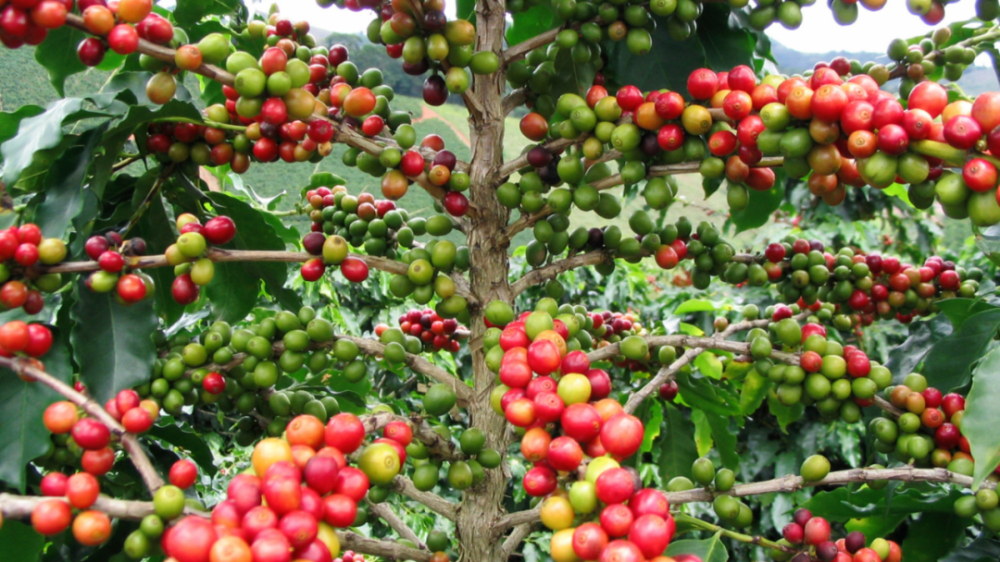Colombia Coffee Bean Flavor Taste Manor Area Quality Grinding Scale Introduction
Introduction to Colombia Coffee Beans
The pure taste of Colombia coffee is inseparable from the hard work of local growers, in addition to the natural environment with the most favorable conditions for coffee growth. In Colombia, coffee is cultivated on 1.07 million hectares, there are about 302,000 coffee plantations in the country, and 30 to 40 per cent of the rural population depends directly on coffee production. Although Colombia has many farms, they are not large. Each farm has an area of only about 2 hectares, and more than 80% of coffee plantations have only about 5000 coffee trees, with an average of 3000. Thus, agriculture in Colombia is of the small farm type. Locals plant tall trees or banana trees around coffee trees. During the seedling stage, coffee trees are sheltered to ensure a cool and humid environment for coffee growth. Due to the high humidity in the coffee forest, the small temperature difference, the slow maturity of coffee beans, which is conducive to the accumulation of caffeine and aromatic substances, the coffee quality is the best. Colombia is the world's third largest coffee producer and exporter, the world's largest exporter of Arabica coffee beans and the world's largest exporter of washed coffee beans.
Unique geographical environment makes Colombia coffee
Colombia, beautiful mountains, beautiful scenery, pleasant climate, four seasons such as spring, fresh air, Qinren heart. Colombia's mild climate, humid air and diverse climate make it a harvest season all year round, with different types of coffee maturing at different times. What they grow is the unique quality of Arabica coffee beans, coffee ground from this coffee beans, rich flavor, aftertaste, can be called coffee boutique. Nowadays, many people equate "Colombia coffee" with "high quality" and "good taste." World coffee is divided into two series: one is "hard" coffee represented by Brazil, which tastes strong; the other is "soft" coffee represented by Colombia, which tastes light. The difference lies in the altitude of the origin and the planting method. Brazil grows coffee in hilly red soil more extensively, while Colombia produces coffee in mountainous black soil intensively.
Colombia coffee is divided into more than 200 grades, which means that coffee is very regional. The coffee-producing region of the country is located in the Andes, where the climate is mild and the air is humid. Colombia has three Cordillera mountains running north-south, right into the Andes. Coffee is grown along the highlands of these mountains. The terraces provide a diverse climate, with harvest seasons throughout the year and different types of coffee maturing at different times. And fortunately, unlike Brazil, Colombia doesn't have to worry about frost damage. There are approximately 700 million coffee trees in Colombia, of which 66 per cent are grown in modern plantations and the rest in small traditionally managed farms.

Important Notice :
前街咖啡 FrontStreet Coffee has moved to new addredd:
FrontStreet Coffee Address: 315,Donghua East Road,GuangZhou
Tel:020 38364473
- Prev

Description of West Java Honey Flavor of Coffee beans introduction to the region and country of the manor
After discussing the three treatments of coffee in Brazil, it is not clear which treatment has the best flavor for coffee beans. they are all the process of turning coffee fruit into raw coffee beans. including peeling, pulp and pectin layer removal or retention, drying and other processors. And all kinds of treatment methods are influenced by region, traditional habits or market demand, and they are spreading.
- Next

Introduction to the characteristics of flavor and taste quality of Yunnan small-grain coffee brewing method
Yunnan small grain coffee brewing method taste quality grinding scale treatment method Yunnan small grain coffee beans are strong but not bitter, fragrant but not strong, slightly fruity. Bourbon (Bourbon) is a small-grain coffee widely cultivated in Yunnan at present. It is a variety of small-grain coffee second only to Tibika. At first, the main branch and the trunk are 45.
Related
- Detailed explanation of Jadeite planting Land in Panamanian Jadeite Manor introduction to the grading system of Jadeite competitive bidding, Red bid, Green bid and Rose Summer
- Story of Coffee planting in Brenka region of Costa Rica Stonehenge Manor anaerobic heavy honey treatment of flavor mouth
- What's on the barrel of Blue Mountain Coffee beans?
- Can American coffee also pull flowers? How to use hot American style to pull out a good-looking pattern?
- Can you make a cold extract with coffee beans? What is the right proportion for cold-extracted coffee formula?
- Indonesian PWN Gold Mandrine Coffee Origin Features Flavor How to Chong? Mandolin coffee is American.
- A brief introduction to the flavor characteristics of Brazilian yellow bourbon coffee beans
- What is the effect of different water quality on the flavor of cold-extracted coffee? What kind of water is best for brewing coffee?
- Why do you think of Rose Summer whenever you mention Panamanian coffee?
- Introduction to the characteristics of authentic blue mountain coffee bean producing areas? What is the CIB Coffee Authority in Jamaica?

